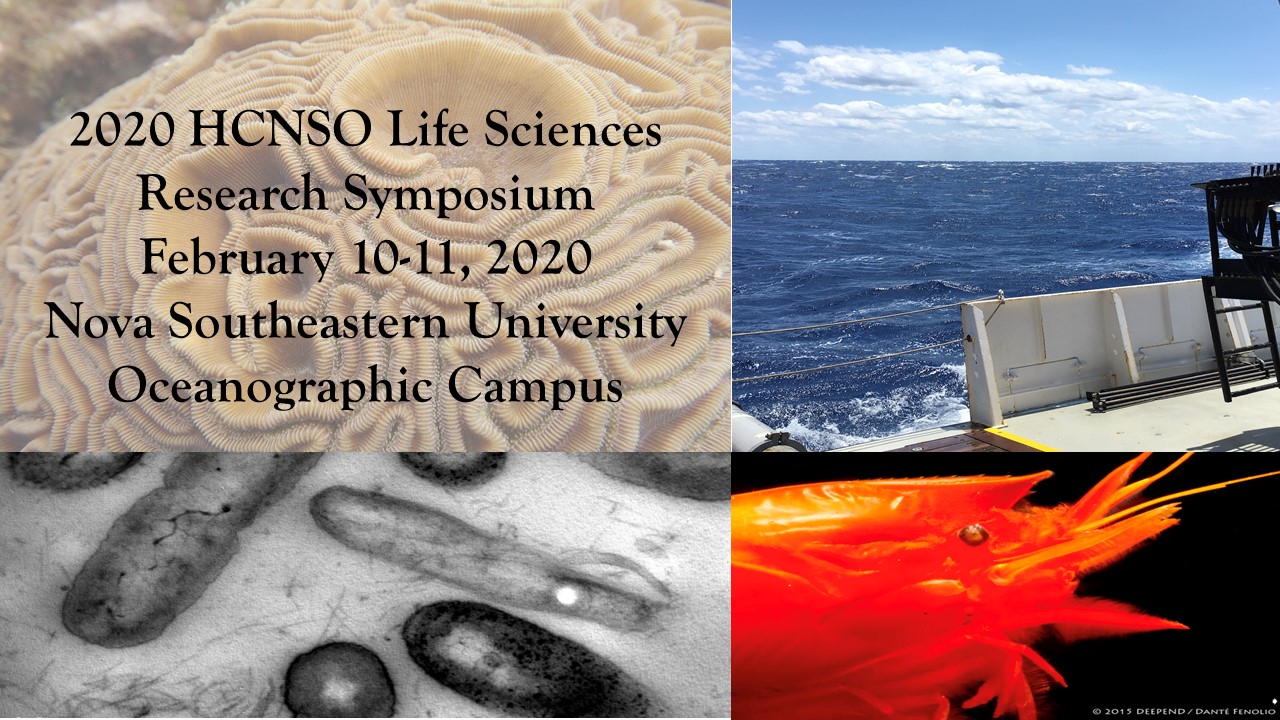Title
Observation and Modeling of Low-salinity Lenses off the Louisiana Coast
Location
HCNSO Guy Harvey Oceanographic Center Nova Southeastern University
Start
2-11-2020 4:00 PM
End
2-11-2020 4:15 PM
Type of Presentation
Oral Presentation
Abstract
Observation and Modeling of Low-salinity Lenses off the Louisiana Coast
Alexander V. Soloviev1, Breanna Vanderplow1, and Cayla W. Dean1, Egbert Schwarz2, Susanne Lehner2, Hui Shen3, William Perrie3
1Nova Southeastern University Halmos College of Natural Science of Oceanography, Dania Beach, FL 33004
2German Aerospace Center Remote Sensing Technology Institute Oberpfaffenhofen 82234 Weßling, Germany
3Bedford Institute of Oceanography 1 Challenger Dr, Dartmouth, NS B2Y 4A2, Canada
River runoff on the Louisiana Coast produce relatively shallow, low-salinity lenses. These lenses create significant horizontal density gradients in the upper ocean and can spread as gravity currents. In this paper, we analyze the field and synthetic aperture radar (SAR) satellite measurements conducted off the Louisiana Coast during LASER and SPLASH field campaigns. We investigate dynamics of low-salinity lenses using computational fluid dynamics (CFD) tools. The CFD model reveals the so-called ‘head’ at the edge of the spreading lens, which is a distinctive feature of gravity currents. The upwind edge of the lens is destabilized by the wind-driven flow of higher salinity/density water over the lens’s edge, which triggers the Kelvin-Helmholtz (KH) instability in the form of billows. The KH billows initiate strong mixing and large entrainment fluxes at the upwind edge of the lens. The downwind edge of the lens is stabilized by horizontal advection of the lower salinity (less dense) water. The model also develops spiraling coherent structures at the frontal edge of the spreading low-salinity lens, further intensifying mixing. These coherent structures resemble the 3D pattern of water motion in the leading edge of the gravity current and trailing fluid as reported by Özgökmen et al. (2004) and Soloviev et al. (2015). The model reproduces the main features of in situ and SAR observations of low-salinity lenses off the Louisiana Coast. The results of this work help to understand the effect of river runoff on oil spill propagation during the Deepwater Horizon disaster.
Observation and Modeling of Low-salinity Lenses off the Louisiana Coast
HCNSO Guy Harvey Oceanographic Center Nova Southeastern University
Observation and Modeling of Low-salinity Lenses off the Louisiana Coast
Alexander V. Soloviev1, Breanna Vanderplow1, and Cayla W. Dean1, Egbert Schwarz2, Susanne Lehner2, Hui Shen3, William Perrie3
1Nova Southeastern University Halmos College of Natural Science of Oceanography, Dania Beach, FL 33004
2German Aerospace Center Remote Sensing Technology Institute Oberpfaffenhofen 82234 Weßling, Germany
3Bedford Institute of Oceanography 1 Challenger Dr, Dartmouth, NS B2Y 4A2, Canada
River runoff on the Louisiana Coast produce relatively shallow, low-salinity lenses. These lenses create significant horizontal density gradients in the upper ocean and can spread as gravity currents. In this paper, we analyze the field and synthetic aperture radar (SAR) satellite measurements conducted off the Louisiana Coast during LASER and SPLASH field campaigns. We investigate dynamics of low-salinity lenses using computational fluid dynamics (CFD) tools. The CFD model reveals the so-called ‘head’ at the edge of the spreading lens, which is a distinctive feature of gravity currents. The upwind edge of the lens is destabilized by the wind-driven flow of higher salinity/density water over the lens’s edge, which triggers the Kelvin-Helmholtz (KH) instability in the form of billows. The KH billows initiate strong mixing and large entrainment fluxes at the upwind edge of the lens. The downwind edge of the lens is stabilized by horizontal advection of the lower salinity (less dense) water. The model also develops spiraling coherent structures at the frontal edge of the spreading low-salinity lens, further intensifying mixing. These coherent structures resemble the 3D pattern of water motion in the leading edge of the gravity current and trailing fluid as reported by Özgökmen et al. (2004) and Soloviev et al. (2015). The model reproduces the main features of in situ and SAR observations of low-salinity lenses off the Louisiana Coast. The results of this work help to understand the effect of river runoff on oil spill propagation during the Deepwater Horizon disaster.


